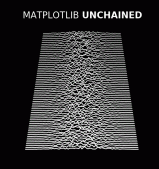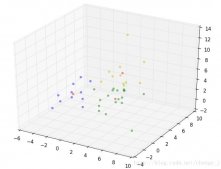什么是method?
function就是可以通過名字可以調用的一段代碼,我們可以傳參數進去,得到返回值。所有的參數都是明確的傳遞過去的。
method是function與對象的結合。我們調用一個方法的時候,有些參數是隱含的傳遞過去的。下文會詳細介紹。
instancemethod
|
1
2
3
4
5
6
7
8
9
|
In [5]: class Human(object): ...: def __init__(self, weight): ...: self.weight = weight ...: def get_weight(self): ...: return self.weight ...: In [6]: Human.get_weightOut[6]: <unbound method Human.get_weight> |
這告訴我們get_weight是一個沒有被綁定方法,什么叫做未綁定呢?繼續看下去。
|
1
2
3
4
5
6
7
|
In [7]: Human.get_weight()---------------------------------------------------------------------------TypeError Traceback (most recent call last)/home/yao/learn/insight_python/<ipython-input-7-a2b2c5cd2f8d> in <module>()----> 1 Human.get_weight() TypeError: unbound method get_weight() must be called with Human instance as first argument (got nothing instead) |
未綁定的方法必須使用一個Human實例作為第一個參數來調用啊。那我們來試試
|
1
2
|
In [10]: Human.get_weight(Human(45))Out[10]: 45 |
果然成功了,但是一般情況下我們習慣這么使用。
|
1
2
3
4
|
In [11]: person = Human(45) In [12]: person.get_weight()Out[12]: 45 |
這兩種方式的結果一模一樣。我們看下官方文檔是怎么解釋這種現象的。
When an instance attribute is referenced that isn't a data attribute, its class is searched.
If the name denotes a valid class attribute that is a function object, a method object is
created by packing (pointers to) the instance object and the function object just found together
in an abstract object: this is the method object. When the method object is called with an
argument list, a new argument list is constructed from the instance object and the argument list,
and the function object is called with this new argument list.
原來我們常用的調用方法(person.get_weight())是把調用的實例隱藏的作為一個參數self傳遞過去了, self 只是一個普通的參數名稱,不是關鍵字。
|
1
2
3
4
5
|
In [13]: person.get_weightOut[13]: <bound method Human.get_weight of <__main__.Human object at 0x8e13bec>> In [14]: personOut[14]: <__main__.Human at 0x8e13bec> |
我們看到get_weight被綁定在了 person 這個實例對象上。
總結下
- instance method 就是實例對象與函數的結合。
- 使用類調用,第一個參數明確的傳遞過去一個實例。
- 使用實例調用,調用的實例被作為第一個參數被隱含的傳遞過去。
classmethod
|
1
2
3
4
5
6
7
8
|
In [1]: class Human(object): ...: weight = 12 ...: @classmethod ...: def get_weight(cls): ...: return cls.weight In [2]: Human.get_weightOut[2]: <bound method type.get_weight of <class '__main__.Human'>> |
我們看到get_weight是一個綁定在 Human 這個類上的method。調用下看看
|
1
2
3
4
|
In [3]: Human.get_weight()Out[3]: 12In [4]: Human().get_weight()Out[4]: 12 |
類和類的實例都能調用 get_weight 而且調用結果完全一樣。
我們看到 weight 是屬于 Human 類的屬性,當然也是 Human 的實例的屬性。那傳遞過去的參數 cls 是類還是實例呢?
|
1
2
3
4
5
6
7
8
9
10
11
|
In [1]: class Human(object): ...: weight = 12 ...: @classmethod ...: def get_weight(cls): ...: print cls In [2]: Human.get_weight()<class '__main__.Human'> In [3]: Human().get_weight()<class '__main__.Human'> |
我們看到傳遞過去的都是 Human 類,不是 Human 的實例,兩種方式調用的結果沒有任何區別。cls 只是一個普通的函數參數,調用時被隱含的傳遞過去。
總結起來
- classmethod 是類對象與函數的結合。
- 可以使用類和類的實例調用,但是都是將類作為隱含參數傳遞過去。
- 使用類來調用 classmethod 可以避免將類實例化的開銷。
staticmethod
|
1
2
3
4
5
6
7
8
9
10
11
12
13
14
15
16
17
18
|
In [1]: class Human(object): ...: @staticmethod ...: def add(a, b): ...: return a + b ...: def get_weight(self): ...: return self.add(1, 2) In [2]: Human.addOut[2]: <function __main__.add> In [3]: Human().addOut[3]: <function __main__.add> In [4]: Human.add(1, 2)Out[4]: 3 In [5]: Human().add(1, 2)Out[5]: 3 |
我們看到 add 在無論是類還是實例上都只是一個普通的函數,并沒有綁定在任何一個特定的類或者實例上。可以使用類或者類的實例調用,并且沒有任何隱含參數的傳入。
|
1
2
3
4
5
|
In [6]: Human().add is Human().addOut[6]: True In [7]: Human().get_weight is Human().get_weightOut[7]: False |
add 在兩個實例上也是同一個對象。instancemethod 就不一樣了,每次都會創建一個新的 get_weight 對象。
總結下
- 當一個函數邏輯上屬于一個類又不依賴與類的屬性的時候,可以使用 staticmethod。
- 使用 staticmethod 可以避免每次使用的時都會創建一個對象的開銷。
- staticmethod 可以使用類和類的實例調用。但是不依賴于類和類的實例的狀態。












